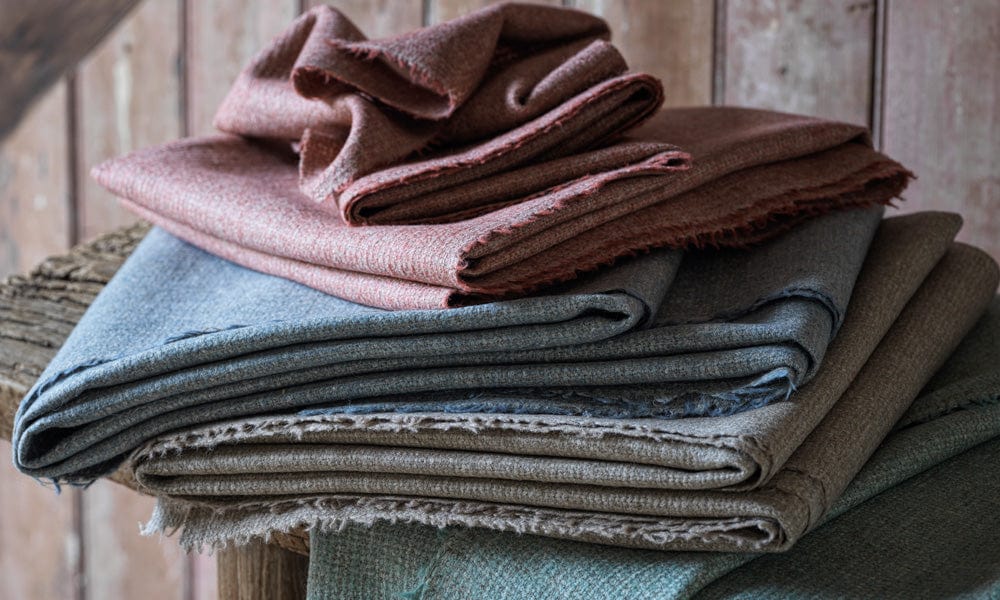Linen is recognized as a tough, flexible fabric that offers practicality, comfort as well as visual appeal. It is used in home, clothing textiles as well as industrial environments, linen’s reputation for its strength and durability has been around for the past. Now, advancements in the field of manufacturing, as well as the ease of accessing wholesale linen fabric manufacturers and platforms for buying linen online make it easier than ever before.
The article defines the most common types, provides details, highlights the most common places to use it, and provides the primary reasons why people pick linen for their work as well as personal tasks. Additionally, you’ll get tips about how to take care of linen so that it can preserve its worth. No matter if you’re a fashion stylist or an interior decorator or involved in commercial procurement, use these insights to make informed decisions about linen fabric.
What is Linen Fabric
Linen is produced from the fibers of the flax plant. Its use dates to ancient Egypt, where linen signified luxury and practicality due to its durability in warm climates. The fiber is naturally crisp, strong, and absorbent, making it suitable for a wide variety of products.
Today, linen is known for:
- Exceptional moisture-wicking properties
- Distinctive natural texture
- Resistance to abrasion
Manufacturers now supply linen fabrics at scale, offering flexibility in sourcing both retail and wholesale linen fabric for new collections or bulk projects.
Main Types of Linen Fabric
The differences in weaving styles, finishes, and fiber processing create multiple types of linen fabrics. Each type lends itself to specific uses. Here are the most common varieties:
Damask Linen
Damask is woven on a jacquard loom, producing intricate patterns that alternate between matte and glossy surfaces. Soft but sturdy, damask is mainly used for decorative items where look and feel matter.
Typical Uses:
- Tablecloths
- Napkins
- Decorative pillow covers
Plain-Woven Linen
Sometimes called glass toweling, this basic weave produces a smooth, flat surface. Plain-woven linen handles frequent washing well and dries fast.
Typical Uses:
- Towels
- Cleaning cloths
- Bedding

Loosely Woven Linen
Used where absorbency matters most, loosely woven linen’s structure lets moisture pass through with ease. It’s softer but less durable than tighter weaves.
Typical Uses:
- Dish towels
- Sanitary napkins
- Gauze
Sheeting Linen
A heavier, close-woven fabric. Its weight and smoothness make it reliable for products that require durability but a soft feel.
Typical Uses:
- Bed sheets
- Garments
- Industrial items
Huckaback Linen
A specialist weave, usually made using a dobby loom, huckaback balances absorbency and resilience. It’s mostly found in high-quality towels.
Typical Uses:
- Hand towels
- Bath towels
When you buy fabric online or through wholesale channels, understanding these types makes it easier to match fabric specifications to project needs.
Practical Applications of Linen
Linen’s range of uses comes from its blend of strength, breathability, and ability to hold dyes and finishes. Here’s how it’s used across industries:
Clothing
Linen is a leading pick in fashion for its breathability and structure. Examples include:
- Shirts, blouses, and dresses
- Trousers and jackets
- Lightweight summer suits
Brands operating at scale often prefer wholesale linen fabric for custom pieces requiring consistency.
Home Décor
The natural appearance and resilience of linen suits home products such as:
- Curtains and drapes
- Bed linen and pillowcases
- Cushion covers
- Tableware (runners, placemats, napkins)
These items remain popular both for households and the hospitality sector, where easy replacement and washing are critical.
Industrial and Commercial
Heavier grades of linen feature in niche applications:
- Canvas for painting or industrial use
- Uniforms in high-temperature work environments
- Backing in wallpaper and composite panels
Sourcing through buy fabric online platforms or direct wholesale linen fabric deals supports large-volume needs efficiently.
Benefits of Using Linen
Linen has distinct advantages over other fibers:
- Durability: Strong natural fibers outlast cotton and many synthetics in both home and commercial settings. High-tensile strength prevents easy wear.
- Breathability & Comfort: Fibers remain cool to touch and airflow allows users to stay comfortable in hot climates.
- Moisture Absorption: Linen can absorb up to 20% of its weight in moisture without feeling damp.
- Sustainability: Flax cultivation requires minimal water compared to cotton and uses fewer pesticides. Linen is biodegradable, supporting eco-conscious sourcing.
- Low Allergenicity: Resistance to dust mites and bacteria suits those with allergies.
- Easy Dyeing & Finishing: Takes color and treatment evenly, offering options for fashion and decor.
These properties keep linen competitive against newer artificial fibers, especially in sectors where durability or comfort is non-negotiable.
Care and Maintenance of Linen
Linen is straightforward to maintain, but attention to care instructions extends its life:
- Washing: Use mild detergents. Prefer cold or lukewarm water to preserve fibers. Machine washable linen should be placed in mesh bags to reduce abrasion.
- Drying by air helps preserve the fiber’s structure the best. Do not overdo it with tumble drying, especially at temperatures that are high because this could cause shrinkage.
- Ironing When ironing, make sure the material is moist to get the optimal results. Choose a setting that is hot to ensure clarity.
- Storage Linens should be kept in a dry and cool location. Avoid storing in plastic containers to avoid water from getting trapped.
Pre-washed linen is less susceptible to distortion or shrinkage and the fabric that is labeled “machine washable” generally holds up to repeated washing. Always read the manufacturer’s guidelines particularly when purchasing fabric online from a variety of new sources.
Selecting the Right Linen Fabric Supplier
Choosing a reliable source is as important as selecting the right fabric type. Some tips:
- Check Minimum Order Quantities (MOQ) for wholesale linen fabric orders to match your business model.
- Request samples before bulk purchasing, to assess hand-feel and finish.
- Review supply chain certifications if sustainability matters to your brand (e.g., OEKO-TEX, GOTS).
- Assess delivery terms and customer support, especially when purchasing through online platforms.
Doing your research before you buy fabric online ensures you receive consistent quality while supporting timely project deliveries.
Bringing Quality Linen into Your Project
Linen fabric balances performance, sustainability, and versatility. By matching the type of linen to your needs, you get the perfect blend of looks and lifespan for clothing, home interiors, or commercial products.
If your business depends on consistency, wholesale linen fabric is your best bet, offering price efficiency and scalable ordering. For smaller projects or sampling, buy fabric online from reputable vendors that support your timeframe and quality targets.
Linen is easy to manage if you follow simple care guidelines, helping retain both look and functional performance for years. Make informed choices about suppliers and fabric types to optimize your value and satisfaction.
Sustainable fabrics are environmentally friendly textiles produced with minimal ecological impact, ethical manufacturing practices, and a focus on biodegradability. Popular options include organiccotton fabric, which is grown without harmful chemicals and uses significantly less water; linen, derived from flax that requires few resources to cultivate; and hemp, a fast-growing, soil-enriching plant. Modern innovations such as TENCEL™ and Cupro (Bemberg) are made from renewable sources through closed-loop systems, delivering soft, breathable, and sustainable alternatives to conventional fabrics. These materials are helping drive the fashion industry toward a more conscious and eco-responsible future.
Explore an extensive collection of custom-printed, mill-dyed, and yarn-dyed fabrics—crafted to suit every design vision. For expert guidance or queries, email us at hello@fabriclore.com. Fabriclore ensures a smooth, trustworthy, and affordable fabric sourcing experience.





